Nucleoporin 107 is a prognostic biomarker in hepatocellular carcinoma associated with immune infiltration
- PMID: 36952458
- PMCID: PMC10225238
- DOI: 10.1002/cam4.5807
Nucleoporin 107 is a prognostic biomarker in hepatocellular carcinoma associated with immune infiltration
Abstract
Objective: To assess the diagnostic value and clinical significance of nucleoporin 107 (NUP107) in hepatocellular carcinoma (HCC), and explore the possible mechanisms.
Methods: The transcriptomic and clinical data of HCC patients were retrieved from The Cancer Genome Atlas (TCGA) and GEO databases. Tissue specimens were collected from HCC patients in the Guangxi area. According to the expression levels and prognostic characteristics of NUP107, ROC curves and nomogram models were constructed using the R package.
Results: NUP107 was highly expressed in 26 human cancers including HCC, and was associated with advanced HCC staging and worse prognosis. NUP107 showed satisfactory ability to predict the prognosis of HCC patients (AUC >0.8). Results of gene set enrichment analysis (GSEA) further showed that NUP107 was mainly associated with cell cycle-related pathways such as the cell cycle, DNA replication, G2M checkpoint, E2F target, and mitotic spindle. In addition, NUP107 was also associated with immune infiltration in HCC and showed significant positive correlation with immune checkpoints (PD-L1 and TIM-3).
Keywords: cell cycle; hepatocellular carcinoma; immune cells; immune checkpoints; nucleoporin 107 (NUP107).
© 2023 The Authors. Cancer Medicine published by John Wiley & Sons Ltd.
Conflict of interest statement
The authors have declared that there are no competing interests.
Figures
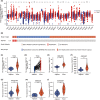
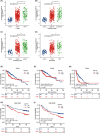

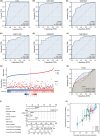
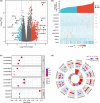

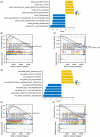
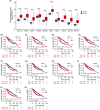
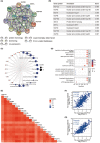

References
-
- Bray F, Ferlay J, Soerjomataram I, Siegel RL, Torre LA, Jemal A. Global cancer statistics 2018: GLOBOCAN estimates of incidence and mortality worldwide for 36 cancers in 185 countries. CA Cancer J Clin. 2018;68(6):394‐424. - PubMed
-
- Sung H, Ferlay J, Siegel RL, et al. Global cancer statistics 2020: GLOBOCAN estimates of incidence and mortality worldwide for 36 cancers in 185 countries. CA Cancer J Clin. 2021;71(3):209‐249. - PubMed
-
- Fitzmaurice C, Allen C, Barber RM, et al. Global, regional, and national cancer incidence, mortality, years of life lost, years lived with disability, and disability‐adjusted life‐years for 32 cancer groups, 1990 to 2015: a systematic analysis for the global burden of disease study. JAMA Oncol. 2017;3(4):524‐548. - PMC - PubMed
Publication types
MeSH terms
Substances
LinkOut - more resources
Full Text Sources
Medical
Research Materials
Miscellaneous

